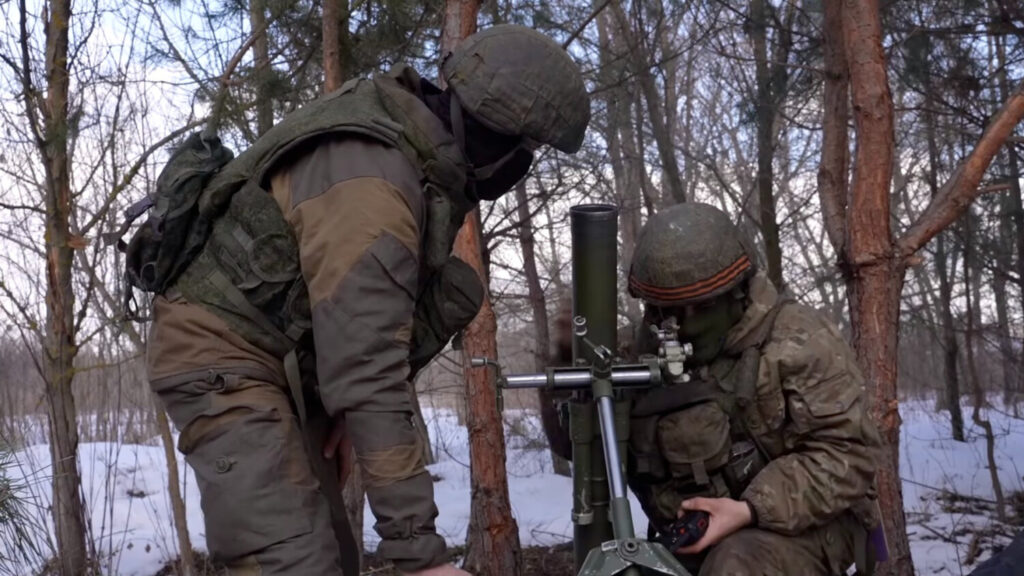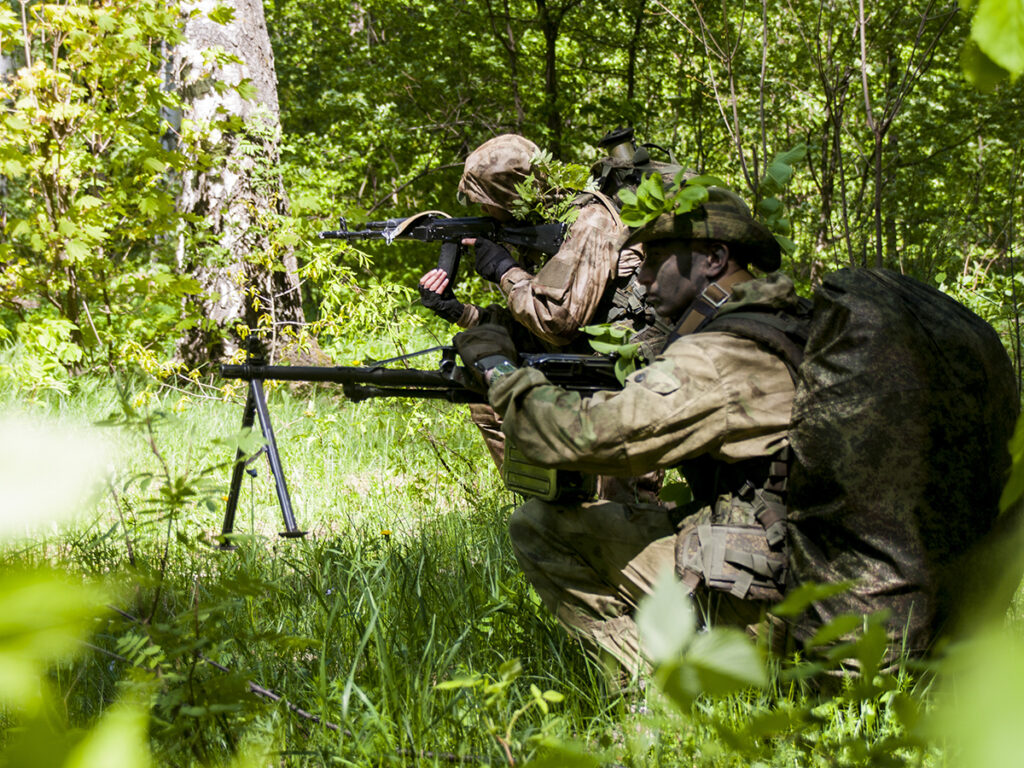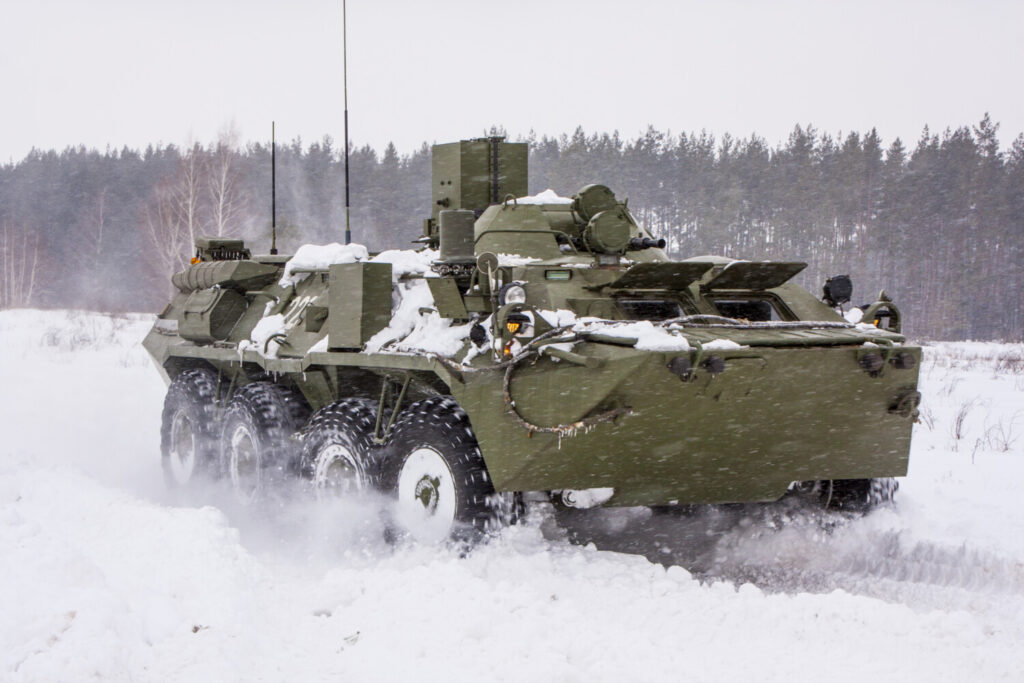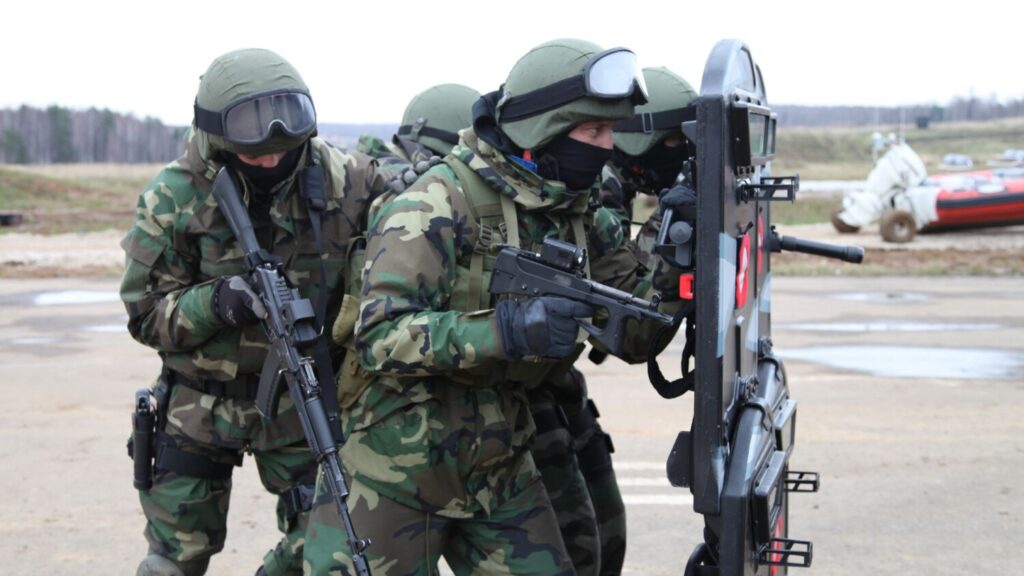How Small Reconnaissance Units are Playing a Critical Role in Russian Frontline Movements in 2025
Amid mounting casualties and armor losses during their invasion of Ukraine, Russian forces are attempting to adapt to battlefield realities to minimize troop losses while consolidating gains. Since the spring of 2025, Russia has been employing Diversionary Reconnaissance Groups (DRGs) to breach gaps in Ukrainian defenses and pinpoint weak spots that would allow mechanized forces to punch through.
The Armed Forces of Ukraine (AFU) have struggled to contain breaches of Russian DRGs for a myriad of reasons, and Russian reconnaissance units have achieved tactical gains in key cities such as Kupiansk and Pokrovsk.
Russia’s DRG Teams
Russian DRG units are staffed with three to ten troops, with the majority incorporated into special forces such as Spetsnaz and SSO, or specialized troops such as naval infantry (marines). The primary purpose of the Diversionary Reconnaissance Groups includes sabotage operations, breaching weakly defended sectors of fortifications, intelligence gathering, and holding key sectors for potential breakthroughs.
Already having a manpower advantage and willing to sustain high casualties to achieve objectives, Russia’s flag officers deploy DRGs during the night or in inclement weather. By using meteorological conditions to their advantage, the reconnaissance groups maneuver to bypass Ukraine’s FPV drones and artillery.
Once the DRG units reach a key objective, the goal of the reconnaissance groups is to avoid surveillance detection and eliminate any Ukrainian troops or civilians in the area that could see them. This DRG tactic has been seen in Pokrovsk, where Russian infiltrators killed several civilians in October 2025.
Suppose the reconnaissance groups establish a bridgehead. In that case, Russia will gradually start bringing in heavy equipment and armor before Ukraine’s reinforcements can arrive to plug the gap in the defense.
Role in Reconnaissance Units in Key Frontline Sectors
DRGs have been observed along several critical fronts of the battlefield, where Russia aims to apply maximum pressure in the autumn and winter. With Moscow now facing extreme austerity measures to keep the wartime economy afloat, Russian autocrat Vladimir Putin wants to capture as much territory as possible before any economic upheaval comes home.
Active frontlines where DRGs are spotted include Kupiansk, Lyman, Dobropillia, Pokrovsk in Donetsk, and Pokrovske in Zaporizhzhia. Beginning in early 2025, Russian DRGs gradually gained a foothold beyond the Oskil River to launch the Kupiansk offensive.
After infiltration of blind spots in Ukrainian defense, the Russian DRG units (in small groups of three to five operators) disguised themselves in civilian clothing, which in itself is a prominent war crime of perfidy. By disguising themselves in civilian attire, Russian DRG teams conceal their small arms and light semi-automatic weaponry while concealing themselves in residential buildings, and eliminating Ukrainian defenders.
By slowly bringing in DRG operatives into Kupiansk, Russian units created a localized bridgehead, allowing Russia to gain a major foothold in the city, with fluid battles currently underway.
Adjacent to Kupiansk, DRGs are seeing some tactical success in the city of Pokrovsk, which has become the deadliest offensive for Russian forces since the Battle of Berlin in WWII. Losing over 600 tanks, hundreds of infantry fighting vehicles, and 100,000 troops killed and wounded, the DRGs were critical for Russia to establish a presence in the city.
Aforementioned, the DRGs in the Pokrovsk sector wear civilian clothing to conceal themselves from Ukrainian defenders. Furthermore, the heavy use of fiber-optic drones by Russia, which has grown in drone warfare production, is hampering the movements of the AFU.
The situation in Pokrovsk has become critical enough that some of the Ukrainian high command, such as Lieutenant General Budanov and General Syrskyi, have been seen near the city to command localized counterattacks and a potential slow tactical withdrawal to more fortified positions.
One sector where Russian DRGs were neutralized and repelled was near Dobropillia. In August 2025, Russian DRGs broke through the critical defense lines due to Ukraine’s manpower shortage.
In an effort to demoralize Ukrainian defenders and perhaps convince the West to limit military aid, some of the DRGs planted flags far beyond the frontlines. The Azov Corps, one of Ukraine’s elite units, was able to plug the breakthrough at Dobropillia and encircle and capture numerous Russian troops.
Why Ukraine is Having Trouble Stopping Infiltrations
There are several key factors for the tactical success of the DRGs. Each problem is fixable, but Kyiv needs a central focus on minimizing localized issues before they escalate into regional or nationwide problems.
First, a major reason DRG teams have found blind spots in Ukrainian defenses is the growing manpower shortage, which can be addressed. However, if ignored, the shortage of infantry can become acute and existential.
Ukraine is capable of recruiting and conscripting 20-25,000 recruits a month. Still, due to negligent commanders, a lack of field commanding experience, or fear of becoming a casualty, Kyiv has struggled to retain these troops. Frontintelligence Insight, an independent Ukrainian intelligence analyst, has documented numerous cases of AWOL and desertion that the high command must address.
Secondly, countering Russian unmanned aerial vehicle (UAV) activities will be crucial as the Kremlin’s war machine continues to ramp up production. Most electronic warfare countermeasures and anti-drone weapons will be needed for frontline defenders. This effort will require even greater anti-drone capabilities and equipment from Western and Asian countries, who, like Ukraine, could face the same kind of deadly FPV warfare in the future.
Lastly, greater trust in field commanders is needed to make critical decisions under existential pressure and threats from DRGs. When a breach occurs along the frontline, field commanders should be given maximum authority to immediately neutralize the threat rather than wait for command to dispatch reserves.
Now that the Russian invasion of Ukraine has become a four-year war, the Diversionary Reconnaissance Groups are becoming a major factor in imminent advances as the Kremlin’s combined arms capabilities wither away. Still, Ukraine needs to address the critical infantry shortage immediately, or more breaches by DRGs can and will occur.






